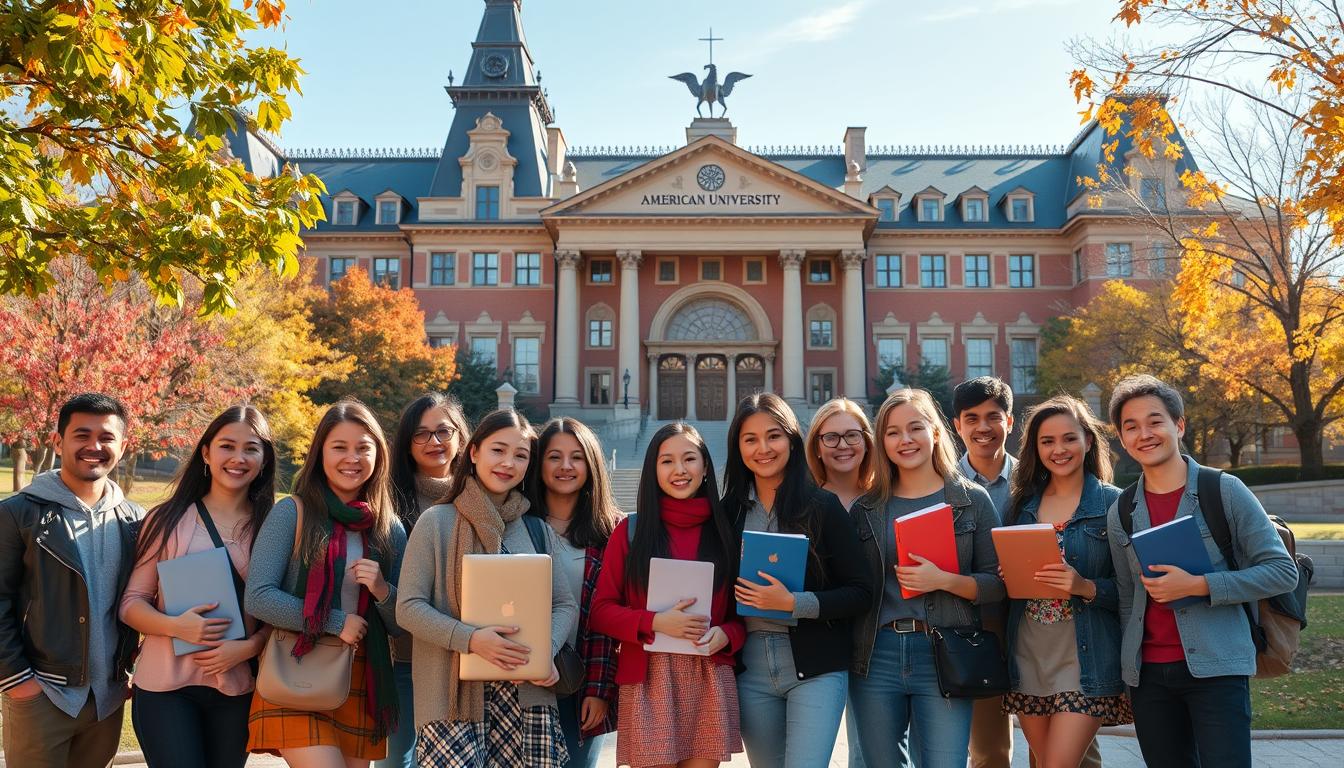Understanding Scholarships for Visa-Holding International Students in the US
Overview of Visa-Holding International Students
Visa-holding international students represent a vibrant and diverse demographic within the U.S. education system. These individuals often face unique challenges, including cultural adaptation and financial hurdles. This group primarily includes students on F-1, J-1, and M-1 visas, each with specific regulations regarding work and study.
- F-1 Visa: Generally for academic students pursuing degrees.
- J-1 Visa: Often for exchange students participating in work and study programs.
- M-1 Visa: Primarily for students in vocational or non-academic programs.
Importance of Scholarships for this Group
Navigating costs can be daunting for international students, with tuition ranging significantly based on residency status. Scholarships not only alleviate financial burdens but also make education more accessible.
- Scholarships boost motivation.
- They reduce dependency on family finances, as 60-80% of international students often rely on family support.
- They provide opportunities for students to focus on their studies without financial strain.
In essence, scholarships serve as a vital lifeline, allowing visa-holding international students to pursue their educational dreams in the U.S. without excessive financial strain.

Types of Scholarships Available
Merit-Based Scholarships
Merit-based scholarships are awarded to students based on academic achievements, talents, or exceptional skills. These may include:
- High grades or test scores (like SAT/ACT or TOEFL)
- Leadership roles in extracurricular activities
- Outstanding performance in sports or the arts
Merit scholarships are highly competitive but can cover significant tuition costs.
Need-Based Scholarships
Need-based scholarships are designed to assist students who demonstrate financial need. Factors like family income and personal circumstances contribute to eligibility. Key points include:
- Generally require documentation of financial status.
- Aimed at reducing tuition costs, thereby making education accessible.
Many international students find these scholarships crucial for financing their education.
Country-Specific Scholarships
Country-specific scholarships target students from particular regions or nations, easing their education expenses. Examples include:
- Fulbright Program: Offers scholarships for graduate students worldwide.
- Developing Countries Scholarships: Designed for students from specific developing nations to pursue postgraduate studies.
These scholarships not only lighten financial burdens but also foster cultural exchange and diversity within educational institutions. By seeking these opportunities, international students can find tailored support that aligns with their backgrounds and aspirations.
Eligibility Criteria and Requirements
GPA Requirements
Most scholarships require a minimum GPA, which can vary significantly by program. Those seeking merit-based scholarships typically need to maintain a GPA of 3.0 or higher. For instance, students aiming for prestigious awards might need a GPA closer to 3.5 or even 4.0.
- Always check specific GPA requirements for each scholarship.
Language Proficiency
Language proficiency is crucial for international students studying in the U.S. Many scholarships require proof of English proficiency through standardized tests such as TOEFL or IELTS. Here’s what to keep in mind:
- Minimum scores often range from 79 (TOEFL) to 6.5 (IELTS).
- Preparing early for these tests can offer ample time to improve scores.
Essay or Personal Statement
Crafting a compelling essay is often a critical component of scholarship applications. This personal statement gives students room to highlight their journeys and ambitions. Key tips include:
- Clearly address the essay prompt.
- Share personal experiences that shaped your goals.
- Use a clear structure and proofread for errors.
Sharing your individuality through these documents can significantly enhance your scholarship application, increasing your chances of success.

Application Process
Finding Scholarships
Embarking on the scholarship search requires strategic research. There are numerous online platforms and resources that can guide international students in identifying suitable opportunities.
- University websites: Start by exploring your target institutions’ financial aid sections.
- Scholarship databases: Utilize platforms like Fastweb or Scholarship.com for curated lists.
- Government programs: Don’t forget to check local and national scholarship offerings.
Documents Needed
Preparing your application portfolio is crucial for a strong submission. Commonly required documents include:
- Transcripts: Official academic records from your previous institutions.
- Letters of Recommendation: Typically from teachers or mentors who can vouch for your abilities.
- Personal Statement: A well-crafted essay detailing your goals, experiences, and motivations.
Tips for a Successful Application
To really make your application stand out, consider these essential tips:
- Be authentic: Present your unique narrative and experiences.
- Tailor your application: Customize each application to highlight how you meet the scholarship’s specific criteria.
- Proofread and revise: Ensure your documents are free of errors; a polished application reflects thoroughness.
By following these steps, international students can enhance their chances of securing valuable scholarships to fund their studies in the U.S.
Tips for Securing Scholarships
Networking and Building Relationships
Networking plays a pivotal role in securing scholarships. Building relationships with professors, mentors, and fellow students can open doors to unexpected opportunities.
- Attend university events and seminars to connect with potential sponsors.
- Join academic clubs to meet like-minded individuals.
Engaging with others will not only inspire you but also provide valuable recommendations for your applications.
Crafting a Strong Application
A strong application is your ticket to standing out. Focus on these key elements:
- Tailored Essays: Customize each essay to align with the scholarship’s mission and values.
- Proofread: Ensure your application is free of errors—attention to detail counts.
- Showcase Achievements: Highlight your academic and extracurricular achievements clearly.
Personal anecdotes can add a unique touch, making your application memorable.
Seeking Guidance from Advisors
Don’t hesitate to seek advice from academic advisors or mentors. They can offer insights on:
- Scholarship opportunities you may not know about.
- Application strategies that have worked for other students.
Support from experienced individuals can boost your confidence and improve your application quality. By incorporating these tips, you enhance your chances of securing financial aid for your educational journey in the U.S.
Non-Traditional Scholarship Sources
Research Grants
Research grants can be a fantastic non-traditional funding avenue for international students. Many universities, especially at the graduate level, offer funds for specific projects.
- Eligibility Criteria: Often tied to academic research proposals.
- Application Process: Requires detailed project outlines and potential contributions to the field.
Securing a grant not only funds education but also enhances your academic profile.
Sponsorship from Organizations
Sponsorships from companies and international organizations often provide financial support for education. These sponsorships can cover tuition and living expenses.
- Corporate Sponsorships: Businesses may fund students in fields like engineering or business management.
- Non-Profits: Many non-profits offer scholarships with specific criteria, such as community service or leadership.
These sponsorships typically require a commitment to work for the organization post-graduation.
Internship Programs
Internships can offer financial aid through stipends or tuition reimbursement programs for international students.
- Paid Internships: Some programs provide a wage that can help offset living costs.
- Academic Credit: Certain internships can also count toward your academic credits, adding value to your studies.
By exploring these non-traditional sources, international students can discover additional financial support options that align with their academic pursuits.
Overcoming Challenges in the Scholarship Journey
Language Barriers
For many international students, language proficiency can be a significant hurdle in securing scholarships.
- Practice and Preparation: Engage in language courses or conversation groups to improve fluency.
- Utilize Resources: Books, online courses, and language exchange apps can be immensely helpful.
Remember, consistent practice boosts confidence, making applications and interviews less daunting.
Financial Constraints
Navigating financial challenges is often part of the journey. Many students find scholarships to alleviate this burden.
- Budget Wisely: Develop a financial plan to manage expenses.
- Explore All Avenues: Look for multiple scholarships, grants, and assistantships to maximize financial support.
Understanding your financial situation allows you to focus more on your studies.

Adapting to Cultural Differences
Cultural adjustments can impact academic performance and social interactions.
- Engage with the Community: Join clubs or attend events to build connections and support networks.
- Seek Counseling: Many universities offer resources to help international students transition smoothly.
Embracing this new cultural landscape will not only enhance your experience but can lead to lifelong friendships. By proactively addressing these challenges, international students can navigate their scholarship journey more effectively and ensure a successful academic experience in the U.S.
Success Stories and Testimonials
Real-Life Experiences of Scholarship Recipients
Many international students have transformed their academic journeys through scholarships.
For example, Maria from Brazil secured a Fulbright Scholarship, allowing her to pursue a Master’s in Environmental Science in the U.S.
- She shared, “This scholarship opened doors I never dreamed possible and allowed me to connect with mentors in my field.”
Such stories illustrate how scholarships can catalyze success.
Impact of Scholarships on Career and Education Goals
Scholarships often serve as stepping stones towards greater career aspirations.
For instance, Ahmed, a Gates Millennium Scholar, stated, “The financial support helped me focus on my studies while pursuing my passion for technology.”
- Many recipients report that scholarships bolster their confidence and ambition, allowing them to aim higher in their careers.
Ultimately, scholarship funding doesn’t just alleviate financial burdens; it also enhances educational experiences and future opportunities, leading to transformative life outcomes.
Conclusion and Final Thoughts
Recap of Key Points
As we’ve explored, securing scholarships as an international student in the U.S. can significantly ease the financial burden of higher education. Key points include:
- Types of Scholarships: Understand the different scholarships available, such as merit-based, need-based, and field-specific.
- Application Strategies: Start early, research thoroughly, and tailor each application.
Embracing these elements can greatly impact your educational journey.
Encouragement for Pursuing Scholarship Opportunities
Don’t let challenges deter you from applying for scholarships. Each application is an opportunity to showcase your unique story and aspirations.
- Stay Persistent: Apply to multiple scholarships to increase your chances of success.
- Seek Help: Utilize available resources, like your university’s financial aid office.
You have the potential to unlock a world of opportunities—go for it!

Leave a Reply